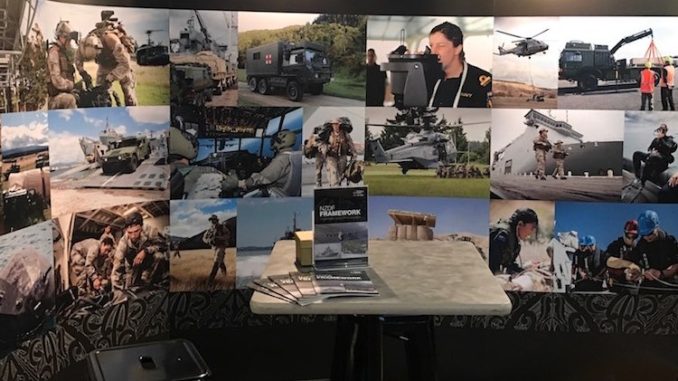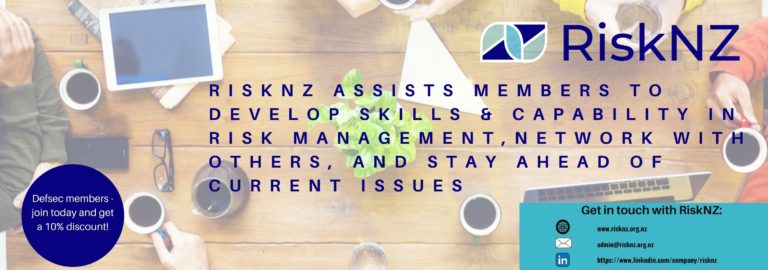
In this exclusive interview, CJDS Charlie Lott updates editor Nicholas Dynon on progress made since the launch last year of the NZDF Framework for External & Industry Engagement and what we can expect over the coming 12 months.
LoD: The NZDF Framework for External & Industry Engagement was released the better part of a year ago, representing a big step forward for Defence. To what extent have staff been able to integrate the philosophies of the framework into their roles?
CL: When we released the Framework we followed up with a soft launch around camps and bases and explained to anyone involved in procurement what we wanted to achieve by taking the bold step of ‘partnering for greater effect’. We wanted to ensure that staff got the message that it’s okay to engage, and the framework provided the means by which they could do it.
We also launched it at an NZDIA monthly members meeting so that everyone got the same message that we were serious about this new paradigm and that it’s okay for Defence and industry to engage in free and frank discussions.
I think our staff got what we were wanting to do, and for the most part have enthusiastically adopted the philosophy of engaging as partners rather than as adversaries.
This is evidenced by the growing number of NZDF staff attending NZDIA monthly meetings, the Annual Forum, the Defence Engineering, Science and Technology Conference; and a significant number of staff now visit our suppliers on a routine basis to get to know them, what their capabilities are and the like.
I think it is also evidenced by our people talking about ‘value’ rather than ‘cost’ in everyday conversations about engagement, which is a fundamental shift in the way that Defence has traditionally engaged with our suppliers.
Most importantly, it is evidenced by a fundamentally good change in what our Defence Commercial Services (DCS) folk are thinking about procurement and engagement.
I have seen a shift in the focus and outputs of our DCS team from the transactional space or drafting and managing contracts to managing internal and external relationships and asking ‘why not’ instead of the previous ‘why?’.
DCS members have become a lot more strategic in their outlook – and that’s all credit to them. They’ve actually seen what we’re trying to do through the Framework, and have enthusiastically adopted it.
Enjoying this article? Consider a subscription to the print edition of Line of Defence.
LoD: Since you took on the role of CJDS, how much of a culture shift have you seen in the NZDF in terms of industry and commercial savviness?
CL: It was always there Nick, but it was latent. People were afraid to engage because they didn’t understand how far they could go, when to pull back for ethical or probity reasons, and what the left and right of arcs were. In other words, our team didn’t understand that their choices in the engagement space weren’t so much a difference between right and wrong but rather between right and more right. The Frameworkgives them that sort of guidance.
What I’ve seen is people ringing Deb Howarth our Director, Defence Industry Engagement, and actually asking how to engage.
LoD: Looking back over your time so far in the role , what are you most proud of?
CL: The fact that MAJGEN Keating’s partnering for greater effect is actually openly spoken about, and that we are prepared as an organisation to actually ask our partners ‘we’ve been thinking, what do you think?’ before we commit to a course of action in procurement or supply chain.
Also, the fact that value has replaced cost, and people realise that in many cases – because Defence doesn’t put a value on its people’s time – value is often quite soft but measurable all the same.
But what I’m really proud of is that Defence is starting to be regarded as an organisation that commerce and industry actually like to work with – people are now proud to be part of the ‘Force Behind The Force For New Zealand’. Sure our business drivers are different, but at the end of the day we are just like any other business – not required to generate a profit or margin but required to be fiscally prudent.
We have openly recognised in the Frameworkthat industry has a right to make a fair and sustainable margin, and in return we have the obligation to spend taxpayers funds wisely. Somewhere in the middle there is this sweet spot that we are both finding far more easily by being open, transparent and communicating to listen rather than just communicating as a box ticking exercise.
LoD: What is on your priority list for next for the next 6 months and 12 months?
CL: We have committed to large and fundamental business change and powerful transformation programmes in our digital information and communications spaces. Both the CIS Change and Transformation Programme and our moves into analytics and the digital spaces are fundamentally about business and organisational – read cultural – change.
Couple these with the work that our Emerging Technologies Group is doing, and I think we are in for an exciting – but also a bit frightening – ride that will really challenge us as we move from specifying the ‘what, where when, why, who and how’ to a far less prescriptive ‘what, where when and why’, and let the ‘how’ and ‘who’ be proscribed by our partners who will know the effect we want and how best to create that with us.
LoD: What help are you looking for from industry for next the 6-12 months?
CL: We have adopted a deliberate policy of what I call ‘fail forward’. This recognises that as we transform, as we innovate, as we become more agile, we will inevitably try some things that won’t work.
Rather than apportion blame, I’d like Industry to help us learn from things that don’t quite go according to plan, and to offer constructive advice in the learning space. Provided that we learn from things that go awry and that we don’t make the same mistake again, there is nothing at all wrong with being a learning organisation.
In accepting this, there is a very good chance that the lessons we learn in this new space can be applied equally to the intelligence and operational environment as they can to the business and commercial environments. In my space the gold lies in the fact that if you try something with a partner that doesn’t work, no one gets hurt except a bit of pride – if you make the same mistake on operations people do get hurt – I’d like industry to help us avoid that.
I’m asking industry to give us a hand to be a Petri dish, to try some new stuff, to try some transformation, try business change and when we come and ask a question be honest. And I’m starting to see that happen. They’re coming to us now and expressing alternatives as opposed to us saying this is how we’re going to do this. Don’t be afraid to tell us where we might be going wrong.
The other question I’ll be asking for industry’s help on is “how does the NZDF cope with the mass ‘re-employment’ of people that will be caused by the 4thindustrial revolution – what we call 4thGeneration digi?”
I don’t subscribe to the contention that there will be mass unemployment caused by AI, AR, IoT, and the exponentiality that comes from global connectedness, but I do subscribe to the notion that our people will be employed further up the value chain as automation, artificiality and virtuality come steaming at us. I would value Industry’s countenance on how we get out in front of that… now!
LoD: The Auckland Business Hub is widely regarded as a resounding success. What plans are there for hubs in other parts of the country?
CL: I think the Auckland Hub is actually too small for what we want it to do. That’s a lesson learnt, but we didn’t know how successful it was going to be. I’m very proud to see all manner of our partners now using for all manner of meeting and gatherings, and they’re welcome to use it. It’s another part of us engaging with government and non-government partners.
We’ve just established a Defence Business Centre in Lower Hutt on a very similar construct to the business hub in Auckland.
As resources and likely usage permits, I would like to see these defence business centres established as a network in the main centres and even as offshoots in the regions for what I’ll call ‘defence innovation centres’, which might be set up as a pop-up for a specific task or reason.
If we’re serious about adopting and promoting innovation, why couldn’t we put a defence innovation centre outside the CBD in, say, Porirua or Kapiti – close enough to Defence HQ to allow ‘innovation to flow into the organisation’ but not in a downtown environment so as to stifle or paralyse by analyse.
The whole idea of the Emerging Technologies Group is to take an idea that somebody’s playing with in the marketplace and bring it into Defence, play with it and see if it has applicability before it’s employed more widely in the Defence Force – in effect reducing the time to market. It’s been a remarkable success.
The idea now is to grow that into an innovation centre model. We’re asking our partners – and encourage our young – to come and join us and play in that space. The Australian Navy’s got one, it’s a fearless environment where people can play with ideas, and if it fails nobody loses.








